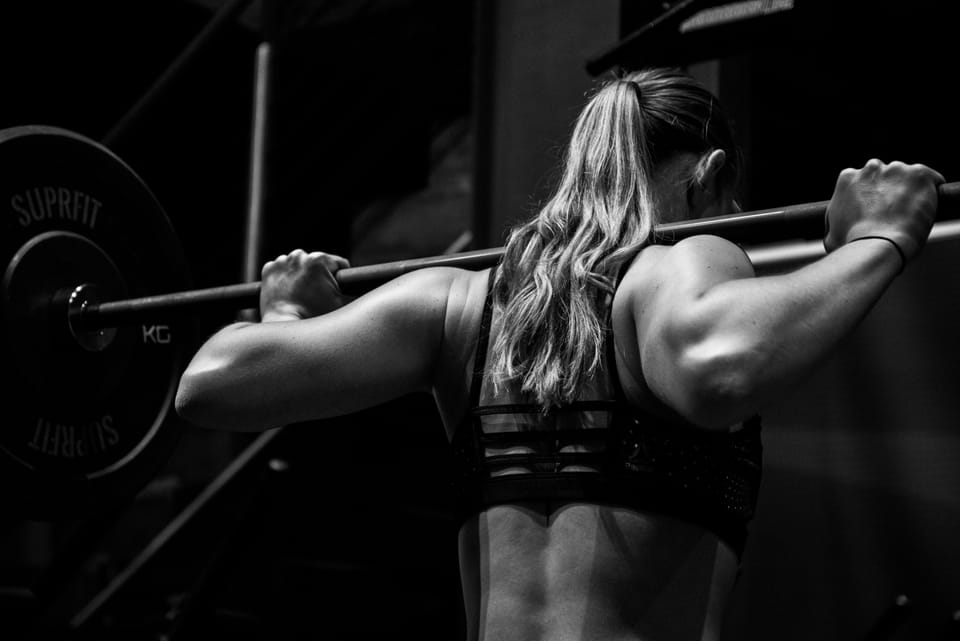🏋️♀️ Men vs. Women in the Gym: Do We Really Need to Train Differently?

I once watched a guy and a girl walk into the gym together. He beelined to the squat rack and loaded it like he was prepping for the Olympics. She grabbed a resistance band and did glute kickbacks in the mirror for 30 minutes.
Neither one was “wrong.”
But neither one totally understood how their biology, hormones, and physiology could actually shape their training for better results.
So today, we’re breaking it down: how men and women are built differently for fitness, how that affects training style, and how to use it to your advantage.
Let’s lift the science curtain, shall we?
🧠 First Up: The Physiology Stuff (Stay With Me)
From a purely anatomical standpoint, men and women are 95% the same. But that 5%? It makes a big difference when it comes to muscle growth, recovery, and performance.
Here’s a quick-hit breakdown:
💪 Muscle Mass & Size Potential
- Men typically have more muscle mass overall—thanks to higher testosterone levels (about 10–20x more).
- Women have more lower body strength relative to their body weight.
🧪 Source: Journal of Applied Physiology, 2001
🧬 Hormones: Estrogen vs. Testosterone
- Testosterone promotes muscle protein synthesis (aka gains).
- Estrogen, however, is anti-catabolic—it helps prevent muscle breakdown and supports connective tissue health.
- Women may recover faster because of it.
🧪 Source: Sports Medicine, 2014
🏃♀️ Endurance & Fatigue
- Women tend to have more Type I muscle fibers (slow-twitch), making them naturally better at endurance.
- Women fatigue slower and can often perform more reps at a given percentage of their max than men.
🧪 Source: Medicine & Science in Sports & Exercise, 2016
🩸 The Menstrual Cycle Factor
- Hormone fluctuations throughout the cycle can impact strength, energy, and inflammation.
- Training around the cycle (a.k.a. cycle syncing) is becoming a hot topic—for good reason.
🧪 Source: Scandinavian Journal of Medicine & Science in Sports, 2020
🧠 So… Should Women Train Completely Differently?
No.
But should they optimize for their physiology, strengths, and hormonal fluctuations?
Absolutely.
Here’s what that looks like in practice.
🔁 Training Volume & Intensity
Women can handle more volume.
Thanks to quicker recovery and greater fatigue resistance, many women can train at higher frequencies (4–6x/week) without overtraining. They also often perform more reps at a given intensity than men.
➡️ What this means:
- Consider slightly higher rep ranges (10–15) for most lifts
- Include more accessory volume—especially for glutes, hamstrings, and core
- Recover faster between sets (shorter rest = more work)
🧪 Source: Journal of Strength & Conditioning Research, 2015
🗓️ Cycle-Based Training: A Game-Changer
Let’s be real—training during your period sometimes feels like lifting in wet cement. But it turns out, you can actually harness your hormonal shifts for better results.
Here’s how it breaks down:
- Follicular phase (Days 1–14):
Estrogen rises, energy peaks.
➡️ Go heavy. Push intensity. Set PRs. - Ovulation (Mid-cycle):
Testosterone spikes briefly.
➡️ Ideal for explosive work, sprints, HIIT. - Luteal phase (Days 15–28):
Progesterone rises. Recovery slows.
➡️ Focus on moderate weights, mobility, and lower volume.
🧪 Source: European Journal of Applied Physiology, 2020
➡️ Pro tip: Track your cycle in an app like Clue or Flo, and match training intensity to your hormonal rhythm.
🧱 Body Composition Goals
Most men chase:
- Size
- Strength
- Power
Most women chase:
- Lean muscle
- Toned definition
- Functional strength
Here’s where things get juicy: to get that “lean and toned” look, women still need to lift heavy. No, you won’t “bulk up” (unless you’re eating like a bodybuilder and training like one too).
➡️ Muscle is your metabolism’s best friend.
Building lean tissue raises your resting metabolic rate, supports hormone balance, and helps you burn fat at rest.
🧪 Source: American Journal of Clinical Nutrition, 1999
🧘♀️ Mobility & Injury Prevention
Women have greater joint laxity and are more prone to certain injuries (looking at you, ACL tears). They also tend to have a greater anterior pelvic tilt and quad dominance.
➡️ Training tips:
- Prioritize glute + hamstring strength
- Incorporate single-leg and stability movements
- Don’t skip mobility, especially hips and shoulders
🧪 Source: Sports Health, 2010
💡 TL;DR — Here’s the Cheat Sheet

🚀 So What Should YOU Do?
Forget the cookie-cutter “bro splits” and generic booty band workouts. Whether you’re male or female, train with purpose—but use the science to your advantage.
If you’re a woman:
- Don’t fear the barbell.
- Train with intention, not just fatigue.
- Pay attention to your cycle—it’s not just about cramps.
If you’re a man:
- Don’t skip mobility and volume work.
- Respect recovery—you're not a robot.
- Stop pretending you don’t need glute day. You do.
P.S. Training “like a girl” should be a compliment. It means smart, strong, and in tune with your body. The future of fitness? It’s personalized.
Stay strong,
Harper Blythe 🧬